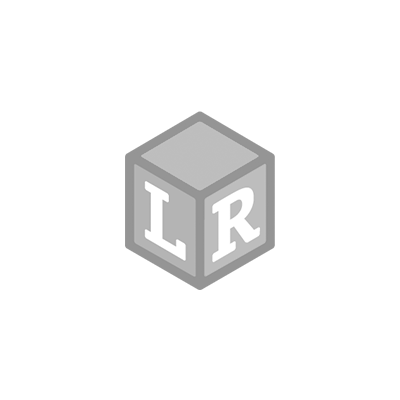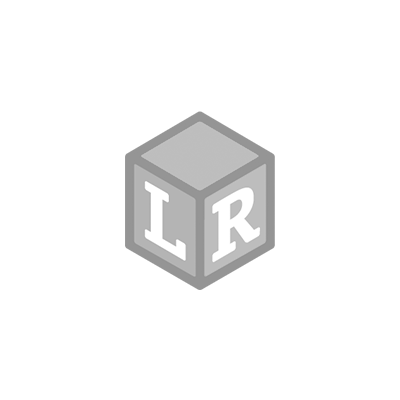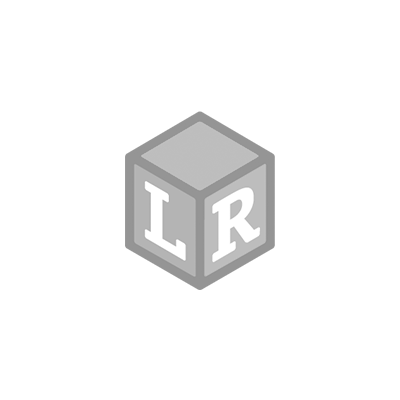
The Science Behind Popcorn!
- Patria Lincoln Posted On Sep 10, 2018 | Science
Everyone’s favorite snack is actually a scientific example of physical change. Popcorn itself wasn’t really invented, but discovered, and might have very well been at the first Thanksgiving feast. Let’s look a little deeper into this delicious discovery! Good zea mays everta, or popcorn kernels, seem dry and firm in plain sight. But inside each kernel is a tiny droplet of water surrounded by a hard shell called a hull. Popcorn can be heated by hot oil, air, or a microwave.The heat turns that water droplet into steam, building pressure inside the hull. Then – POP! – the hull can no longer keep in the pressure and the kernel explodes. The popping sound you hear is due to the rapid escape of water from the kernel.
Good zea mays everta, or popcorn kernels, seem dry and firm in plain sight. But inside each kernel is a tiny droplet of water surrounded by a hard shell called a hull. Popcorn can be heated by hot oil, air, or a microwave.The heat turns that water droplet into steam, building pressure inside the hull. Then – POP! – the hull can no longer keep in the pressure and the kernel explodes. The popping sound you hear is due to the rapid escape of water from the kernel.
 Pop your corn any way you choose. Over the stovetop is this household’s choice, but any way will work. If you choose to microwave, 20 cups is about three bags.
Pop your corn any way you choose. Over the stovetop is this household’s choice, but any way will work. If you choose to microwave, 20 cups is about three bags. Separate your popcorn evenly into how many food coloring choices you want. Here, there are six bowls uniformly distributed in order to make a rainbow.
Separate your popcorn evenly into how many food coloring choices you want. Here, there are six bowls uniformly distributed in order to make a rainbow. Combine the corn syrup, butter, powdered sugar, marshmallows, water, vanilla, and salt together over medium-high heat. Keep the mixture moving and bring to a slow boil.
Combine the corn syrup, butter, powdered sugar, marshmallows, water, vanilla, and salt together over medium-high heat. Keep the mixture moving and bring to a slow boil. For adults only: Carefully pour the mixture evenly into each bowl of popcorn. The mixture is very hot, so let this one to the grown-ups. Use an ice scream scoop in an effort to keep the proportions even.
For adults only: Carefully pour the mixture evenly into each bowl of popcorn. The mixture is very hot, so let this one to the grown-ups. Use an ice scream scoop in an effort to keep the proportions even. Add about 2-3 drops of food coloring to each popcorn/syrup mix.
Add about 2-3 drops of food coloring to each popcorn/syrup mix. Stir each bowl with a clean spoon so you don’t mix colors.
Stir each bowl with a clean spoon so you don’t mix colors. Working fast, shape the balls before the syrup mixture cools. Spray your fingers with a non-stick spray to be able to shape each ball. You can make them as big or small as you’d like! Enjoy!
Working fast, shape the balls before the syrup mixture cools. Spray your fingers with a non-stick spray to be able to shape each ball. You can make them as big or small as you’d like! Enjoy!

So What Makes Popcorn Pop?
 Good zea mays everta, or popcorn kernels, seem dry and firm in plain sight. But inside each kernel is a tiny droplet of water surrounded by a hard shell called a hull. Popcorn can be heated by hot oil, air, or a microwave.The heat turns that water droplet into steam, building pressure inside the hull. Then – POP! – the hull can no longer keep in the pressure and the kernel explodes. The popping sound you hear is due to the rapid escape of water from the kernel.
Good zea mays everta, or popcorn kernels, seem dry and firm in plain sight. But inside each kernel is a tiny droplet of water surrounded by a hard shell called a hull. Popcorn can be heated by hot oil, air, or a microwave.The heat turns that water droplet into steam, building pressure inside the hull. Then – POP! – the hull can no longer keep in the pressure and the kernel explodes. The popping sound you hear is due to the rapid escape of water from the kernel.Why Do Some Kernels Not Pop?
Simply put, there isn’t enough water in the kernel. A water droplet has to be present for that steam pressure to build up. Sometimes kernels are old and stale, or they become scorched during cooking.
All this popcorn talk has us hungry.
Below is a playful recipe for colorful popcorn balls to share with your hungry little scientists. As you make them, explain the science behind what makes popcorn pop. You can also teach your little ones basic color recognition with this rainbow treat!You will need:¾ cup light corn syrup¼ cup butter3 cups powdered sugar1 cup marshmallows2 teaspoons water2 teaspoons vanilla1/8 teaspoon salt20 cups of popped cornFood coloring of your choice Pop your corn any way you choose. Over the stovetop is this household’s choice, but any way will work. If you choose to microwave, 20 cups is about three bags.
Pop your corn any way you choose. Over the stovetop is this household’s choice, but any way will work. If you choose to microwave, 20 cups is about three bags. Separate your popcorn evenly into how many food coloring choices you want. Here, there are six bowls uniformly distributed in order to make a rainbow.
Separate your popcorn evenly into how many food coloring choices you want. Here, there are six bowls uniformly distributed in order to make a rainbow. Combine the corn syrup, butter, powdered sugar, marshmallows, water, vanilla, and salt together over medium-high heat. Keep the mixture moving and bring to a slow boil.
Combine the corn syrup, butter, powdered sugar, marshmallows, water, vanilla, and salt together over medium-high heat. Keep the mixture moving and bring to a slow boil. For adults only: Carefully pour the mixture evenly into each bowl of popcorn. The mixture is very hot, so let this one to the grown-ups. Use an ice scream scoop in an effort to keep the proportions even.
For adults only: Carefully pour the mixture evenly into each bowl of popcorn. The mixture is very hot, so let this one to the grown-ups. Use an ice scream scoop in an effort to keep the proportions even. Add about 2-3 drops of food coloring to each popcorn/syrup mix.
Add about 2-3 drops of food coloring to each popcorn/syrup mix. Stir each bowl with a clean spoon so you don’t mix colors.
Stir each bowl with a clean spoon so you don’t mix colors. Working fast, shape the balls before the syrup mixture cools. Spray your fingers with a non-stick spray to be able to shape each ball. You can make them as big or small as you’d like! Enjoy!
Working fast, shape the balls before the syrup mixture cools. Spray your fingers with a non-stick spray to be able to shape each ball. You can make them as big or small as you’d like! Enjoy!
HAPPY POPPING!

 Shop UK Site
Shop UK Site 


 Here’s what you’ll do:Blow up one balloon per racer but don’t tie off the ends. Instead, twist the end, then attach a kitchen “chip clip” or binder clip to keep the air from escaping.
Here’s what you’ll do:Blow up one balloon per racer but don’t tie off the ends. Instead, twist the end, then attach a kitchen “chip clip” or binder clip to keep the air from escaping. Cut your construction paper into feathers, waddles, and googly eyes and tape the pieces to your “turkeys”.
Cut your construction paper into feathers, waddles, and googly eyes and tape the pieces to your “turkeys”. Set up your race course by placing two chairs about 8 feet apart (you’ll need one set of these chairs for each racer). Cut a 9-foot section of string for each racer and tie the loose end of a length to one chair.
Set up your race course by placing two chairs about 8 feet apart (you’ll need one set of these chairs for each racer). Cut a 9-foot section of string for each racer and tie the loose end of a length to one chair. Thread a straw through the untied end of the string, then pull the string taught and tie to the opposite chair.
Thread a straw through the untied end of the string, then pull the string taught and tie to the opposite chair. Using tape, attach the top, center of the balloon to the straw. Make sure to line the straw up with the release point of the balloon, for straighter, faster flying.Pull the balloons back so the ends are touching the chairs, pinch the balloons above the chip clips, and remove the clips.
Using tape, attach the top, center of the balloon to the straw. Make sure to line the straw up with the release point of the balloon, for straighter, faster flying.Pull the balloons back so the ends are touching the chairs, pinch the balloons above the chip clips, and remove the clips. Call “On your marks, get set, GO”, let go of the balloons, and watch as your turkeys race to the finish line!
Call “On your marks, get set, GO”, let go of the balloons, and watch as your turkeys race to the finish line! Let’s talk turkey about physics! Remember that for every action, there is an equal and opposite reaction (thanks, Newton!). When you blow up the balloon, you are filling it with air. When you release the chip clip, you are releasing the air, creating pressure out of the back of the balloon. This release creates an equal and opposite pressure on the front of the balloon, propelling it forward.
Let’s talk turkey about physics! Remember that for every action, there is an equal and opposite reaction (thanks, Newton!). When you blow up the balloon, you are filling it with air. When you release the chip clip, you are releasing the air, creating pressure out of the back of the balloon. This release creates an equal and opposite pressure on the front of the balloon, propelling it forward.  What You’ll Do:Cut your pipe cleaners in half, then cut some of them in half again.
What You’ll Do:Cut your pipe cleaners in half, then cut some of them in half again. Twist the pieces together to form one-of-a-kind snowflake patterns, making sure that your snowflakes will fit into your container without touching the sides or bottom. (Trim the ends with scissors if need be.)
Twist the pieces together to form one-of-a-kind snowflake patterns, making sure that your snowflakes will fit into your container without touching the sides or bottom. (Trim the ends with scissors if need be.) Tie one end of the string to the center of your snowflake and the other to your pencil or craft stick and check to make sure your snowflake will fit without touching the sides or bottom of your container.
Tie one end of the string to the center of your snowflake and the other to your pencil or craft stick and check to make sure your snowflake will fit without touching the sides or bottom of your container. Bring a pot of water to a boil. For every cup of water you pour into your container, add 3 tablespoons of Borax and stir (this is a job for a parent as the water is boiling hot!). Add more Borax and stir to dissolve, continuing until the water won’t accept any more Borax (it’s okay if there’s some left in the bottom of the jar). Then add a few drops of food coloring and stir.
Bring a pot of water to a boil. For every cup of water you pour into your container, add 3 tablespoons of Borax and stir (this is a job for a parent as the water is boiling hot!). Add more Borax and stir to dissolve, continuing until the water won’t accept any more Borax (it’s okay if there’s some left in the bottom of the jar). Then add a few drops of food coloring and stir. Hang your snowflake in the water by balancing your pencil or craft stick across the top of the jar. If your string is too long, twist it around your pencil until it keeps the snowflake from touching the bottom.
Hang your snowflake in the water by balancing your pencil or craft stick across the top of the jar. If your string is too long, twist it around your pencil until it keeps the snowflake from touching the bottom. Leave your snowflake overnight. Carefully pull your snowflake out of the jar and shake off the excess crystals to reveal your crystalized snowflake!
Leave your snowflake overnight. Carefully pull your snowflake out of the jar and shake off the excess crystals to reveal your crystalized snowflake!
 Borax can be beautiful! Hot water molecules are moving really quickly, which leaves room for the Borax to dissolve between them. As the water cools, the molecules move closer together, “squeezing” the Borax out.
Borax can be beautiful! Hot water molecules are moving really quickly, which leaves room for the Borax to dissolve between them. As the water cools, the molecules move closer together, “squeezing” the Borax out.  Set out the marshmallows and toothpicks and challenge your busy builders to construct their drawings.
Set out the marshmallows and toothpicks and challenge your busy builders to construct their drawings. Once they’re done, see if someone can build a snow den, an igloo, or a walled fort. The possibilities are endless (and delicious!).
Once they’re done, see if someone can build a snow den, an igloo, or a walled fort. The possibilities are endless (and delicious!). With snow covering the ground, fewer plants are growing, which means less food for hungry animals like bears, bats, and squirrels. Hibernating slows down these animals’ metabolisms and reduces their body temperatures, which means they need less energy to survive and can go without eating for several months at a time. Hibernating animals need a safe, hidden spot to snuggle down for the winter months, similar to the caves and burrows you just built!
With snow covering the ground, fewer plants are growing, which means less food for hungry animals like bears, bats, and squirrels. Hibernating slows down these animals’ metabolisms and reduces their body temperatures, which means they need less energy to survive and can go without eating for several months at a time. Hibernating animals need a safe, hidden spot to snuggle down for the winter months, similar to the caves and burrows you just built! 





